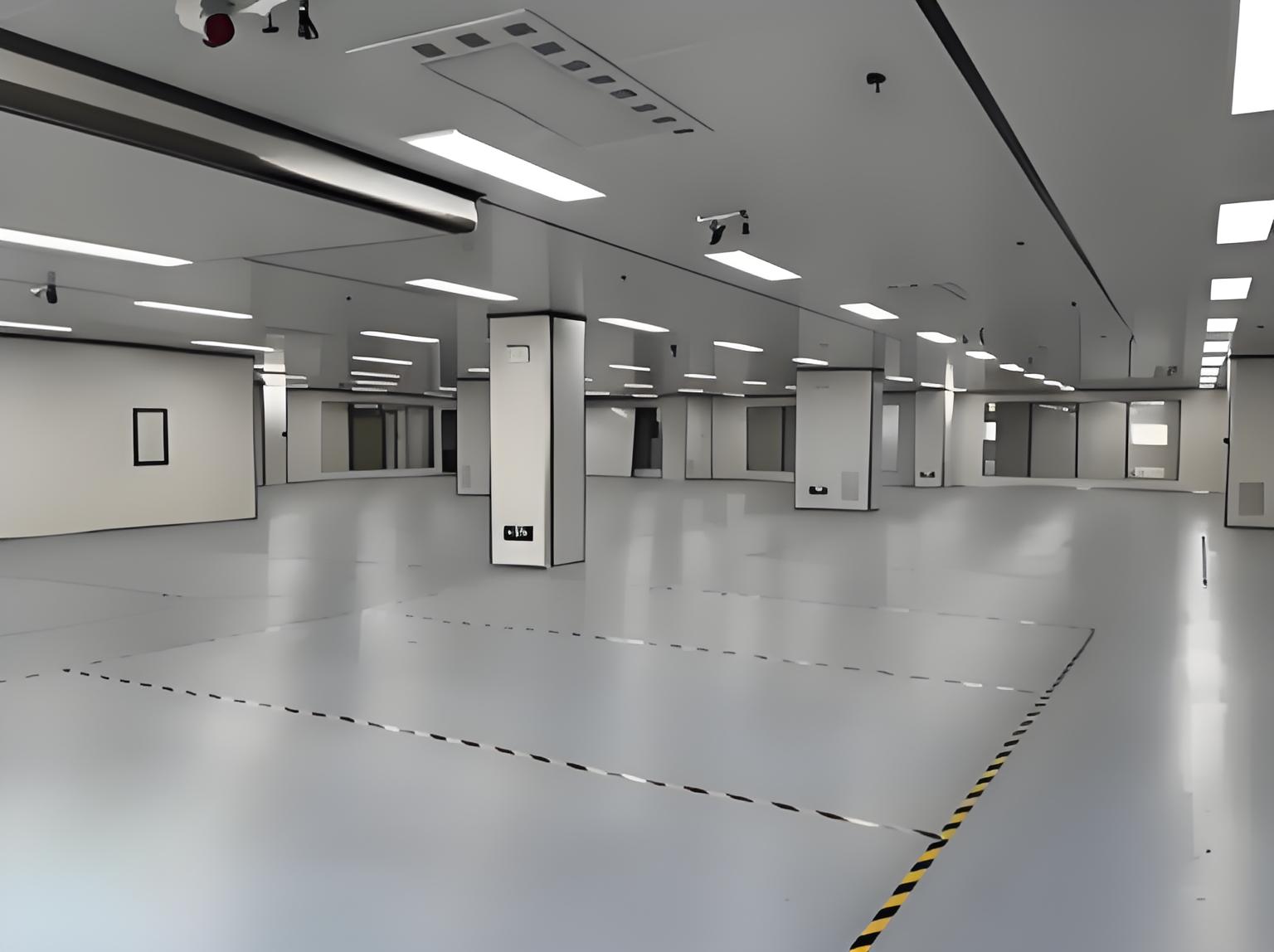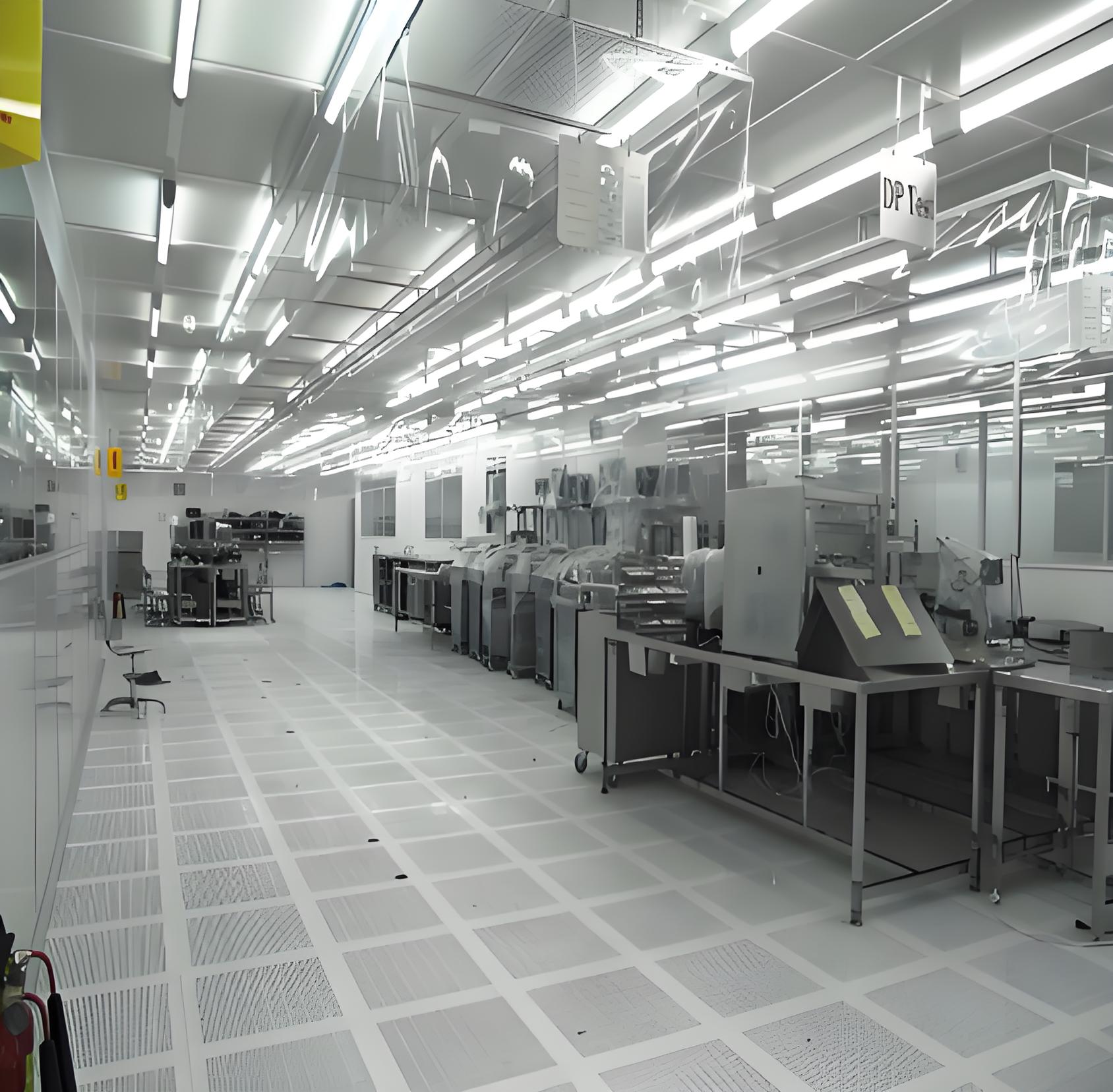




In the highly regulated pharmaceutical, biotechnology, and medical device industries, the design of your laboratory is far more than an architectural exercise—it's a critical foundational element that directly impacts product quality, patient safety, and regulatory approval. GMP lab design refers to the specialized process of creating facilities that adhere to the stringent principles of Good Manufacturing Practices (GMP). This approach ensures that every aspect of the laboratory environment, from airflow to material flow, is meticulously planned to prevent contamination, ensure data integrity, and support reproducible results. A successful GMP-Compliant Laboratory Design is not a luxury; it is an absolute necessity for any operation involved in the testing, development, or quality control of products destined for human use.
This article explores the core components of modern GMP laboratory design, the critical importance of ISO 14644 classification, the benefits of engaging a turnkey partner, and the rising prominence of modular solutions. We will also address the common challenges teams face during such projects.

GMP-Compliant Laboratory Design is a holistic philosophy that integrates regulatory requirements into the very fabric of a building. It goes beyond selecting easy-to-clean surfaces; it encompasses the entire operational ecosystem. The primary goal is to create a controlled environment that minimizes the risks of contamination, mix-ups, and errors, which are the core tenets of GMP.
The key principles guiding this design include:
Controlled Environmental Parameters: Maintaining strict control over temperature, humidity, and air purity is paramount. HVAC systems are the heart of a GMP lab, designed to provide appropriate filtration and pressure differentials to protect sensitive processes and products.
Material and Personnel Flow: A well-designed lab dictates the movement of people, materials (raw and finished), samples, and waste. Segregating these flows through defined pathways and airlocks prevents cross-contamination. This includes clear zoning for different activities (e.g., sterile vs. non-sterile, incoming samples vs. product testing).
Surface Finishes and Materials: All surfaces—walls, floors, ceilings, and benchtops—must be constructed of non-shedding, smooth, impervious, and easily sanitized materials. Corners are coved to eliminate dirt traps, and installations are designed to minimize ledges where dust can accumulate.
Utilities and Services: Utilities like Water-for-Injection (WFI), purified water, compressed gases, and clean steam must be designed and installed to prevent contamination and be easily maintainable. Points-of-use must be located strategically to support operations without compromising the clean environment.
Documentation and Design Qualification (DQ): From the initial concept, the design process is thoroughly documented. The Design Qualification protocol demonstrates and provides evidence that the proposed design meets all user requirement specifications (URS) and regulatory GMP standards before construction even begins.
While GMP provides the philosophical framework, ISO 14644 GMP lab classification provides the measurable, global standard for air cleanliness. This international standard specifies the classification of air cleanliness in cleanrooms and associated controlled environments based on the concentration of airborne particles.
For GMP laboratories, the most relevant classifications are typically ISO 5 through ISO 8.
ISO 5 (Class 100): This is the highest level of cleanliness typically required for critical areas within a GMP lab, such as the immediate environment for filling sterile products or handling highly potent active pharmaceutical ingredients (APIs). This is often achieved using laminar airflow workstations or isolators within a higher-classified background room.
ISO 7 (Class 10,000): This classification is common for background environments for ISO 5 zones or for conducting less critical aseptic processing. Many sterility testing and microbiological labs operate in an ISO 7 environment.
ISO 8 (Class 100,000): This is a common classification for non-aseptic filling areas, component preparation areas, and corridors servicing cleaner rooms.
The specific ISO 14644 GMP lab classification required for each room is determined by the nature of the operations performed within it. The design of the HVAC system, including air change rates (ACH), filter types (e.g., HEPA or ULPA), and pressure differentials, is entirely driven by the target ISO classification for each zone. A successful GMP lab design seamlessly integrates these HVAC requirements to create stable, compliant environments that can be consistently monitored and validated.
Undertaking a GMP laboratory project is a complex endeavor involving a multitude of disciplines: architecture, engineering, validation, procurement, and construction. Coordinating these elements separately can lead to communication gaps, delays, budget overruns, and compliance risks. This is where partnering with a Turnkey cGMP lab design builder becomes a strategic advantage.
A turnkey provider offers a single point of responsibility, managing the entire project lifecycle from initial concept and feasibility studies to detailed design, construction, equipment procurement, installation, qualification, and final handover of a fully functional and validated facility.
The benefits of this integrated approach are significant:
Single Point of Accountability: The builder owns the entire project, eliminating finger-pointing between separate architects, engineers, and contractors. This streamlines communication and problem-solving.
Reduced Risk and Enhanced Compliance: With extensive regulatory experience, a turnkey builder designs with validation in mind from day one. They understand the nuances of GMP-Compliant Laboratory Design, ensuring the facility is constructed to meet all necessary standards, which simplifies the qualification process.
Cost and Time Certainty: Turnkey contracts are often based on a fixed price and a guaranteed timeline. This integrated approach improves scheduling efficiency and helps avoid the costly change orders and delays common in multi-contractor projects.
Seamless Integration: The builder ensures all systems—architectural, mechanical, electrical, and process—are perfectly integrated, which is crucial for maintaining classified environments and operational efficiency.

The traditional design-bid-build method can be slow and disruptive. In response, Modular GMP lab solutions have emerged as a powerful alternative for accelerating timelines and enhancing flexibility. This approach involves constructing purpose-built laboratory modules in a controlled factory environment while site preparation is underway concurrently.
These modules are then transported to the site, assembled, and integrated with utilities. The advantages are compelling:
Accelerated Project Schedules: Factory fabrication can reduce overall project timelines by 30-50% as site work and module construction happen in parallel, unaffected by weather delays.
Enhanced Quality Control: Building in a factory allows for superior craftsmanship and consistency. Every aspect of the construction is monitored under stringent quality controls, leading to a higher-quality finished product.
Future Flexibility and Scalability: Modular GMP lab solutions are inherently designed for change. As needs evolve, additional modules can be added, or existing ones can be reconfigured or relocated with significantly less disruption than a traditional renovation.
Cost Predictability: Factory-based construction minimizes the risk of unforeseen site conditions and leads to more accurate and predictable costing.
These solutions are no longer just for temporary needs; they are permanent, high-quality, and fully compliant facilities that offer a modern, agile approach to GMP lab design.
Even with a clear plan, teams often encounter several hurdles:
Inadequate User Requirement Specification (URS): A vague or incomplete URS is the root cause of many project issues. Without clear, detailed input from all end-users (scientists, quality control, maintenance), the final design may fail to meet operational needs.
Underestimating the HVAC System's Complexity: The HVAC system is the most complex and costly component. Underestimating its spatial, operational, and validation requirements is a common mistake that can compromise the entire facility's classification.
Poor Planning for Material and Personnel Flow: Neglecting to meticulously diagram how people, samples, and materials move through the space can create bottlenecks and, worse, cross-contamination risks that are difficult to rectify after construction.
Budget Overruns Due to Change Orders: Changes made after detailed design and construction have begun are exponentially more expensive. A robust front-end planning phase and selecting the right partner (like a Turnkey cGMP lab design builder) are key to mitigating this.
Validation and Qualification Delays: Treating qualification as an afterthought rather than an integral part of the design process leads to costly delays. The design must be "qualifiable," meaning it can be easily tested and documented to prove compliance.
A successful GMP lab design is a sophisticated blend of regulatory science, engineering precision, and practical operational knowledge. It begins with a deep commitment to GMP-Compliant Laboratory Design principles, is quantified by a clear ISO 14644 GMP lab classification strategy, and is best executed through a streamlined delivery method. Whether you choose the integrated expertise of a Turnkey cGMP lab design builder or the agile efficiency of Modular GMP lab solutions, the focus must always remain on creating a controlled, efficient, and compliant environment that safeguards product quality and patient health. By understanding and addressing the common challenges upfront, organizations can navigate the complexities of these projects and build a foundation for quality that will serve them for years to come.